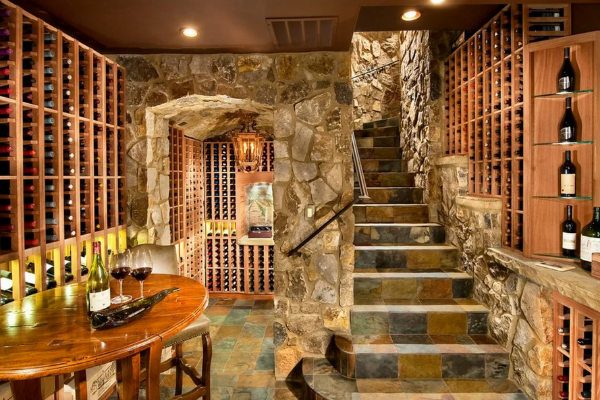Cellars have long been used as storage spaces for various purposes, including preserving food, storing wine, or keeping household items organized. Building a cellar requires careful planning and execution to ensure a reliable and efficient storage space. In this article, we will explore the essential tips and techniques for cellar construction that will help you create a durable and functional storage area.
1. Location and Design Considerations
Before embarking on cellar construction, it is crucial to choose an appropriate location and consider the design aspects. Ideally, cellars should be situated in a cool and dry area, away from direct sunlight and excessive moisture. The design should include proper insulation and ventilation to maintain stable temperature and humidity levels, essential for preserving stored items.
2. Foundation and Structural Integrity
The foundation of a cellar is of utmost importance to ensure its structural integrity. The cellar should be built on a solid and stable foundation that can withstand the weight of the structure and the stored items. Consult with a professional to determine the suitable foundation type based on the soil conditions and the depth of the cellar.
3. Materials Selection
Choosing the right materials is crucial for constructing a reliable and long-lasting cellar. Consider using materials that are resistant to moisture, such as concrete or stone, for the walls and floor. These materials provide durability and prevent water seepage, ensuring a dry and secure storage space.
4. Insulation and Waterproofing
Proper insulation and waterproofing are essential for maintaining optimal temperature and humidity levels in the cellar. Insulate the walls, floor, and ceiling to minimize temperature fluctuations and prevent moisture buildup. Additionally, apply waterproofing techniques, such as sealants and membranes, to protect the cellar from water intrusion.
5. Ventilation and Air Circulation
A well-ventilated cellar promotes air circulation and prevents the buildup of stale air and odors. Install ventilation systems, such as vents or fans, to ensure a constant supply of fresh air. This helps regulate temperature and humidity levels and prevents the growth of mold or mildew.
6. Lighting and Accessibility
Consider the lighting and accessibility aspects when designing your cellar. Install adequate lighting fixtures to facilitate easy navigation and visibility within the storage space. Additionally, ensure that the cellar has proper access points, such as doors or stairs, that are wide enough to accommodate the movement of stored items.
7. Organization and Shelving
To maximize the storage potential of your cellar, implement effective organization techniques and install sturdy shelving units. Utilize vertical space by installing wall-mounted shelves or racks. Group similar items together and label them for easy identification and retrieval. This promotes efficient use of space and minimizes clutter.
8. Security and Safety Measures
Lastly, consider the security and safety aspects of your cellar. Install proper locks or security systems to protect valuable items stored in the cellar. Additionally, ensure that the cellar is equipped with smoke detectors and fire extinguishers to mitigate fire risks. Regularly inspect the cellar for any signs of damage or structural issues to address them promptly.
Conclusion
Building a reliable cellar requires careful planning and attention to detail. By considering location, design, materials, insulation, ventilation, lighting, organization, and security, you can create a functional and durable storage space. Follow the essential tips and techniques outlined in this article to ensure that your cellar construction project results in a reliable storage area that meets your needs and provides a secure environment for your stored items.










